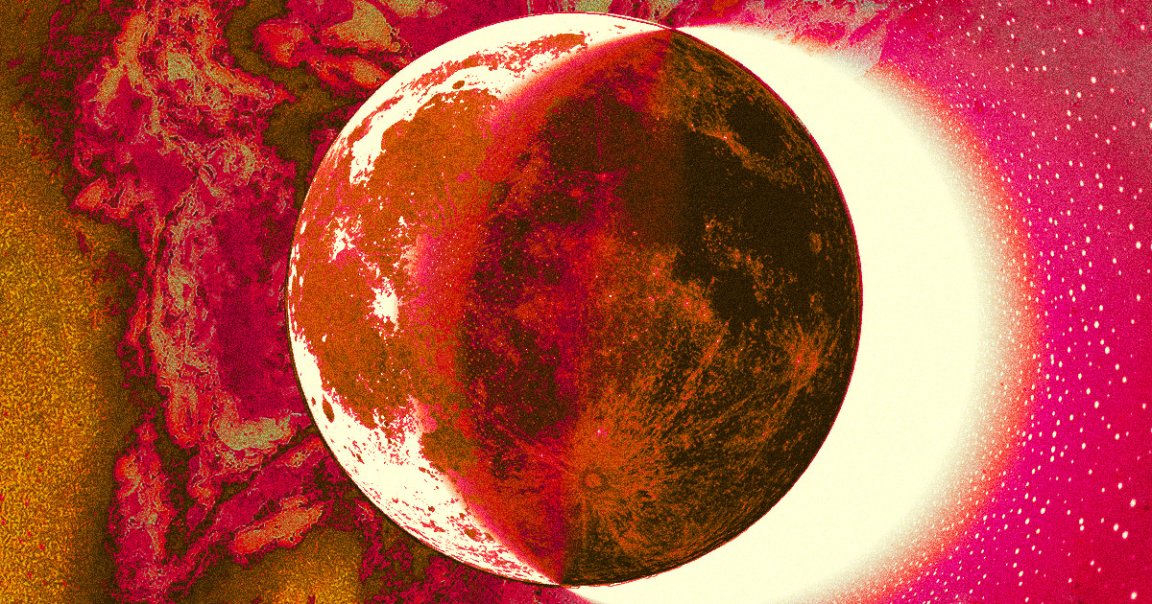
Small Bang
Scientists seem to have figured out why the Moon is made up of such weird and heavy rocks: way back in the day, it turned itself inside out.
For decades now, scientists have pretty much agreed that the Moon formed from debris that flew off the young Earth when another planet smashed into it about 4.5 billion years. That cosmic wreckage “coalesced, cooled and solidified” to form the Moon as we know it today, researchers from the University of Arizona’s Lunar and Planetary Laboratory wrote in a press release — but what happened next is something of a “choose-your-own adventure,” as the scientists describe it.
In a new paper published in the journal Nature Geoscience, the LPL researchers found that the surprisingly high concentration of titanium found in Moon rocks, such as those brought back during the Apollo mission in the 1970s, could be the result of heavy minerals like ilmenite, which is rich in both titanium and iron, initially sinking to the core and then rising back up to the surface.
“Our moon literally turned itself inside out,” declared LPL associate professor and paper co-author Jeff Andrews-Hanna.
Hot To Go
In its earliest days, the Moon was covered in a vast ocean of magma, the composition of which made the young world unstable.
“Because these heavy minerals are denser than the mantle underneath, it creates a gravitational instability,” explained Weigang Liang, the leader of the research and principal author. As such, “you would expect this layer to sink deeper into the moon’s interior.”
For some reason, however, it appears that the titanium-rich rocks first mixed with the mantle, melted, and then came back up to the lunar surface.
Pointing to a 2022 study conducted by Chinese researcher Nan Zhang — who is now a co-author on the recent paper — and hypothesizing that some past impact to the Moon may have pushed the titanium-heavy minerals to its core, Andrews-Hanna said that a “lightbulb went on.”
As with all theoretical explanations of off-world geology, it’ll take further research and far more lunar rock sampling to get to the bottom of how Moon rocks got to be so heavy. But for now, the data does appear to line up.
“Our analyses show that the models and data are telling one remarkably consistent story,” Liang said of the research. “When the Artemis astronauts eventually land on the Moon to begin a new era of human exploration, we will have a very different understanding of our neighbor than we did when the Apollo astronauts first set foot on it.”
More on Moon weirdness: Congresswoman Makes Strange Claims About the Earth’s Moon